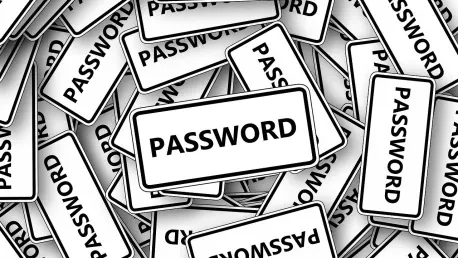For decades, passwords have been the primary method of securing online accounts. They are straightforward and easy to use, but these same characteristics are also their most significant weaknesses. As cyber threats like phishing and data breaches become more sophisticated, the inadequacies of passwords are increasingly apparent. The convergence of emerging technologies such as passkeys, biometrics, and multi-factor authentication (MFA) is setting the stage for a transformative shift in how we secure our online identities. While it is unlikely that passwords will vanish overnight, the world is moving towards significantly reducing their role in digital security.
Historical Context of Digital Passwords
The concept of digital passwords was introduced in 1961 with the Compatible Time-Sharing System (CTSS) at MIT, where users were given unique passwords to access computing resources. Interestingly, this period also witnessed the first password breach by an MIT researcher who hacked the CTSS system for additional computing time. As time progressed, the security surrounding passwords also evolved. Researchers began employing hashing techniques in the 1970s to store passwords securely, marking the advent of a more secure handling method that would become the norm for decades. The 1980s saw the development of basic password policies, setting standards like requiring minimum length and complexity, aiming to bolster digital defenses.
The explosive growth of the internet in the 1990s necessitated the emergence of password managers. These tools were designed to help users securely store and manage multiple credentials, addressing the burgeoning complexity that came with managing numerous online accounts. As we entered the 2000s, early forms of Multi-Factor Authentication (MFA) made their debut, combining passwords with additional layers of security, such as SMS codes, hardware tokens, or biometric verification. These measures aimed to fortify digital security by adding extra hurdles for would-be hackers, setting the stage for further developments in online identity protection.
Rationale for Moving Beyond Passwords
While passwords themselves are not inherently insecure, human tendencies significantly undermine their efficacy. The frequent use of simple passwords like “123456” and the rampant reuse of passwords across multiple accounts amplify vulnerabilities. Surveys indicate that more than half of people reuse the same password across various accounts, which means a single breach can compromise multiple accounts. Such practices make it easier for cybercriminals to gain unauthorized access to sensitive information by exploiting these common weaknesses.
For organizations, the financial costs associated with passwords are considerable. Password resets are frequent and expensive, costing companies an average of $70 per reset. In large organizations, these expenses can accumulate rapidly, sometimes surpassing $1 million annually. Additionally, productivity suffers as employees are locked out of systems and await assistance, with wait times ranging from 20 minutes to 1.5 hours per incident, leading to substantial cumulative losses. The move towards alternative methods like passkeys and biometrics not only addresses these vulnerabilities but also offers a more cost-effective and efficient solution for both individuals and organizations.
Modern Alternatives to Passwords
Passkeys offer the promise of a future free from the need to remember passwords. Utilizing cryptographic keys stored on devices, users can log in without typing their credentials. This method is highly secure against phishing attacks as passkeys eliminate the need for entering login details that could be stolen. The shift from traditional passwords to passkeys represents a significant improvement in digital security, providing a seamless yet robust defense against cyber threats. Moreover, passkeys are designed to integrate smoothly with various devices and platforms, enhancing user convenience while maintaining high-security standards.
Multi-Factor Authentication (MFA) combines passwords with additional verification methods, such as one-time codes sent to phones or generated by authenticator apps. This approach significantly enhances security by adding another layer of protection, making it more difficult for cybercriminals to exploit stolen passwords. Though MFA does not entirely replace passwords, it has become a critical component of modern digital security strategies. However, the effectiveness of MFA depends on the type of secondary factor used, with app-based verification being more secure than SMS codes, which are vulnerable to SIM-swapping attacks.
Biometric authentication leverages unique physical characteristics like fingerprints or facial recognition to verify users. This method is both highly secure and convenient, as it utilizes something inherent to the user. Biometric authentication is often combined with passkeys to further enhance security and simplicity. Despite their advantages, biometric systems are not without challenges. The use of biometrics raises concerns about data privacy and storage security, as biometric data cannot be easily changed if compromised. Additionally, biometric systems may not always perform reliably under certain conditions, such as wet hands for fingerprint scanners or low-light environments for facial recognition.
Challenges and Issues with New Technologies
The widespread adoption of passkeys faces several hurdles, including the need for companies to update their systems, educate users, and ensure that older systems can become compatible with modern standards. Although the promise of passkeys is significant, the path to full implementation is fraught with challenges. Companies need to invest in system upgrades that allow for the integration of passkeys, and users must be educated on how to manage and use them effectively. Additionally, ensuring compatibility between new and older systems can be daunting, particularly in industries that rely heavily on legacy infrastructure.
The usability of passkeys varies, with setup processes differing across devices and services. This inconsistency in terminology and the complexity of managing passkeys can lead to user frustration. Despite these challenges, once established, passkeys generally offer a more seamless user experience compared to traditional passwords. The transition period, however, requires a concerted effort from both developers and users to ensure a smooth shift from passwords to more advanced authentication methods.
Biometric authentication, though highly secure, is not without its issues. The primary concern revolves around data privacy and the security of stored biometric information. Unlike passwords, biometric data cannot be easily changed if compromised, posing a significant risk if breached. Furthermore, biometric systems may not always perform reliably under certain conditions, such as wet hands for fingerprint scanners or low-light environments for facial recognition. These challenges underscore the need for continuous improvement and the development of robust safeguards to protect biometric data.
Persistence of Passwords and Co-Existence with New Technologies
A major obstacle to completely eliminating passwords is the prevalence of legacy systems, especially in industries like banking and government, which still rely on outdated infrastructure. These systems often require substantial investment and time to modernize for passkey compatibility. As a result, passwords continue to play a significant role in digital security, even as newer technologies emerge. The coexistence of passwords and modern authentication methods highlights the need for a gradual transition that accommodates the limitations of existing systems while embracing innovative solutions.
In practice, many current implementations introduce passkeys alongside passwords rather than as complete replacements. This hybrid approach retains some vulnerability to phishing and does not fully address the inherent weaknesses of passwords. In the interim, combining various authentication methods, including passwords, MFA, passkeys, and biometrics, creates a multi-layered defense, enhancing overall security. For example, a typical configuration might involve a password followed by MFA or passkeys augmented with biometric verification for sensitive transactions. This layered approach ensures a higher level of security while accommodating the gradual shift toward more advanced authentication methods.
Strengthening Personal Account Security
Users can enhance their account security by adopting proactive measures, such as enabling multi-factor authentication (preferably app-based), using password managers to generate and store unique passwords, and employing cryptographic passkeys. Creating distinct passwords for critical accounts and utilizing VPNs for secure data transmission are also effective strategies in safeguarding personal information. Regularly checking accounts for unauthorized access, enabling login alerts, and securing email accounts are vital practices that contribute to a robust personal security framework.
In addition to these measures, users should review active sessions periodically and log out of accounts when not in use. Staying informed about the latest cybersecurity threats and best practices can further improve one’s ability to protect sensitive information. By integrating these proactive strategies, individuals can significantly reduce the risk of falling victim to cyberattacks and enhance the overall security of their online presence.
Addressing Myths and Realities of Modern Authentication
There are several myths surrounding modern authentication technologies, which need to be addressed to foster a better understanding of their capabilities and limitations. One common myth is that passkeys will immediately replace passwords. In reality, passkeys currently supplement rather than fully replace passwords, and widespread adoption will take time. Another myth is that biometrics are infallible. While biometrics are highly secure, they are not foolproof and still present potential vulnerabilities.
A prevalent misconception is that MFA codes are immune to interception. However, SMS-based MFA is susceptible to SIM-swapping attacks, making app-based MFA a more secure option. Additionally, the idea that authentication solely ensures unauthorized access prevention is misleading. Modern systems also prioritize recovery methods to safeguard authorized user access in the event of lost credentials or compromised accounts. Understanding these myths and realities helps users make informed decisions about their digital security practices.
Anticipated Trends in Authentication
The future of authentication is poised to enhance user experience while bolstering security. A significant trend is the gradual adoption of passwordless solutions, which will become more widespread as their benefits of enhanced security and user convenience become increasingly apparent. The integration of passkeys, biometrics, and MFA will lead to a more seamless and secure authentication process, reducing reliance on traditional passwords.
Artificial intelligence is expected to play a pivotal role in authenticating users in the future. AI-enhanced authentication will involve detecting suspicious login activities through behavioral biometrics, continuously verifying user identity based on patterns like typing speed and location. Advanced physical biometrics, such as improved facial recognition and iris scanning, will further enhance security and ease of use.
Interoperable authentication systems are likely to become more standardized in the future. This will enable the easier use of a single biometric profile across multiple services or implementing a unified “digital passport.” Zero-trust security models, which assume no user or device is inherently trustworthy, will ensure continuous verification throughout a session rather than relying on a single login event.
Conclusion
For many years, passwords have been the go-to method for securing online accounts. They are simple and user-friendly, but these same features also make them particularly vulnerable to cyber threats. As phishing attempts and data breaches grow more advanced, it’s clear that passwords alone are not enough to protect digital identities.
The advent of new technologies like passkeys, biometrics (such as fingerprints or facial recognition), and multi-factor authentication (MFA) is paving the way for a major shift in online security. Passkeys, for example, use cryptographic keys stored on your device to authenticate your identity, making it much harder for hackers to gain access. Biometrics add another layer of security by relying on unique physical traits, which are difficult to replicate. Meanwhile, MFA combines multiple forms of verification, significantly improving security over what passwords alone can offer.
Despite these advances, it is improbable that passwords will disappear entirely any time soon. However, the reliance on them is expected to diminish considerably as we increasingly adopt more secure methods. The ongoing integration of these technologies suggests a future where digital security no longer hinges on passwords alone, but instead, leverages a multi-pronged approach to protect our online identities more effectively. This transformation represents a crucial leap forward in safeguarding personal information in the digital age.









